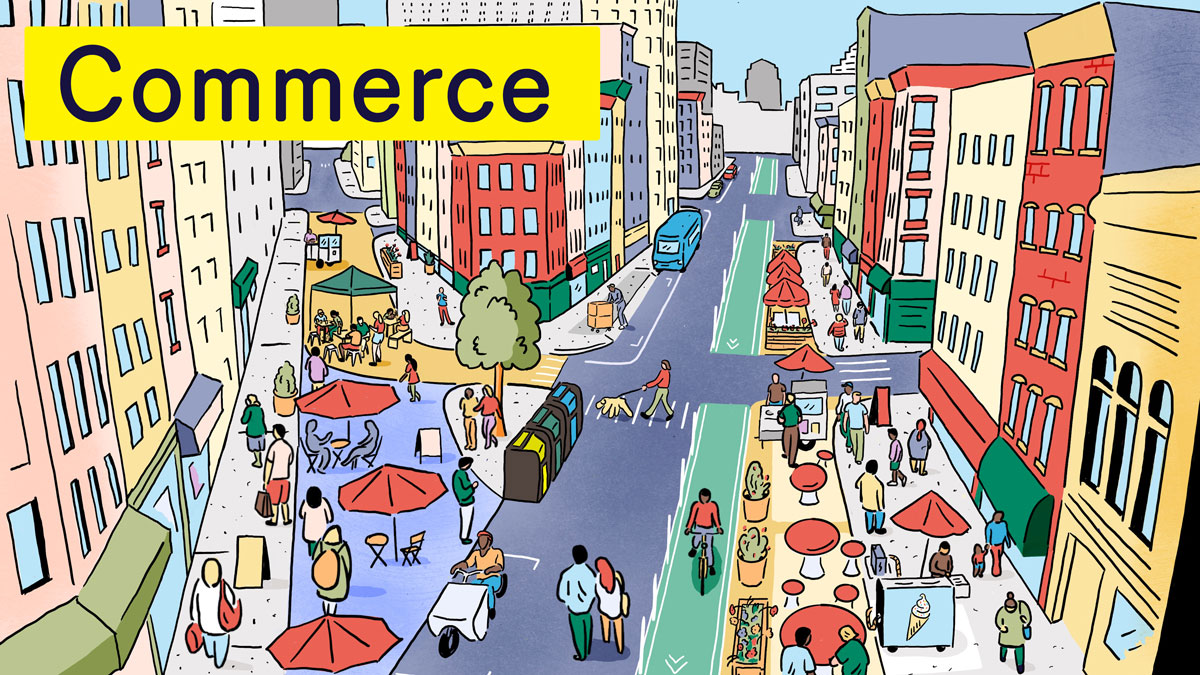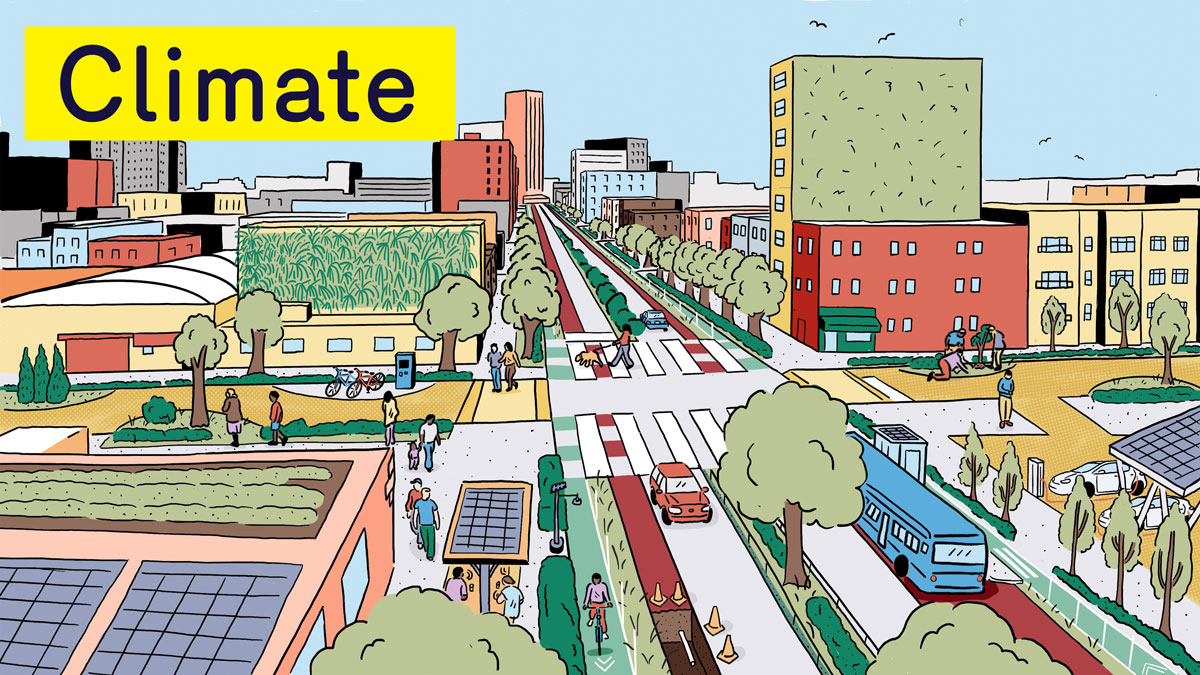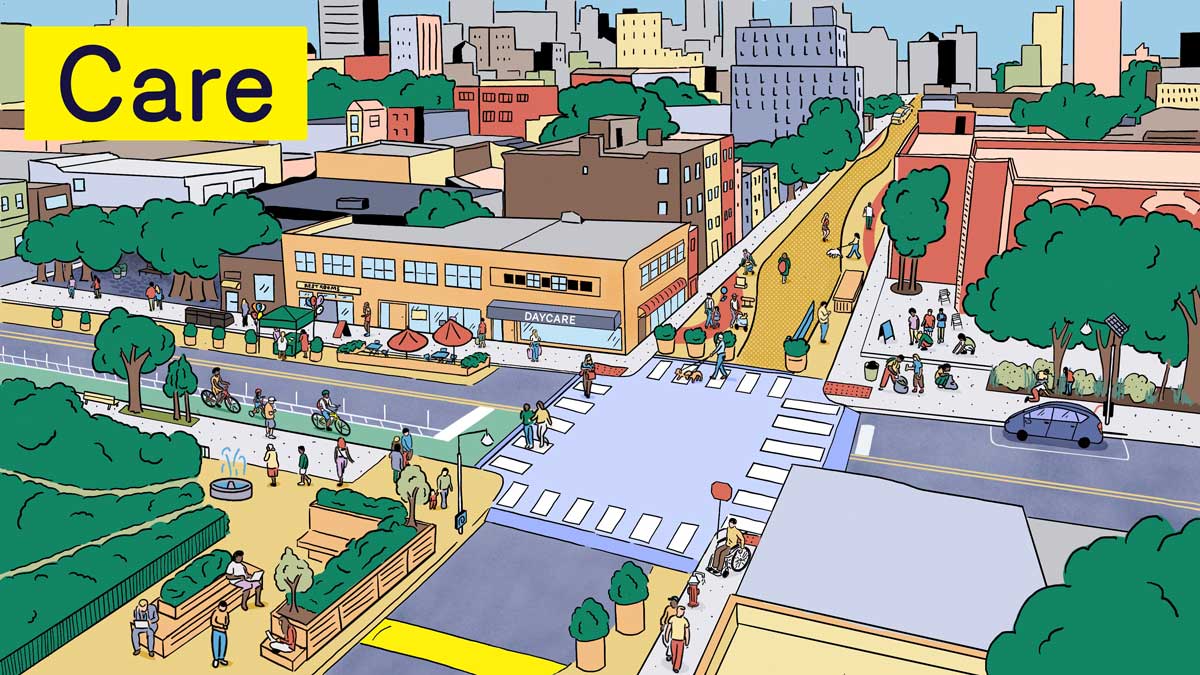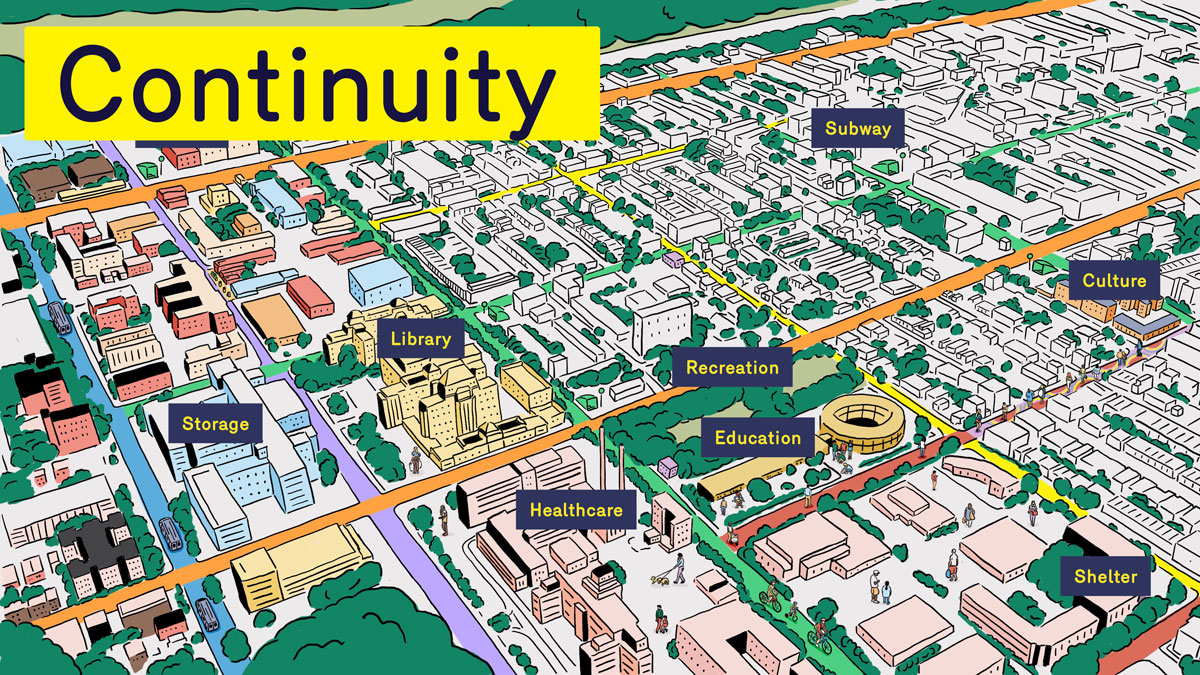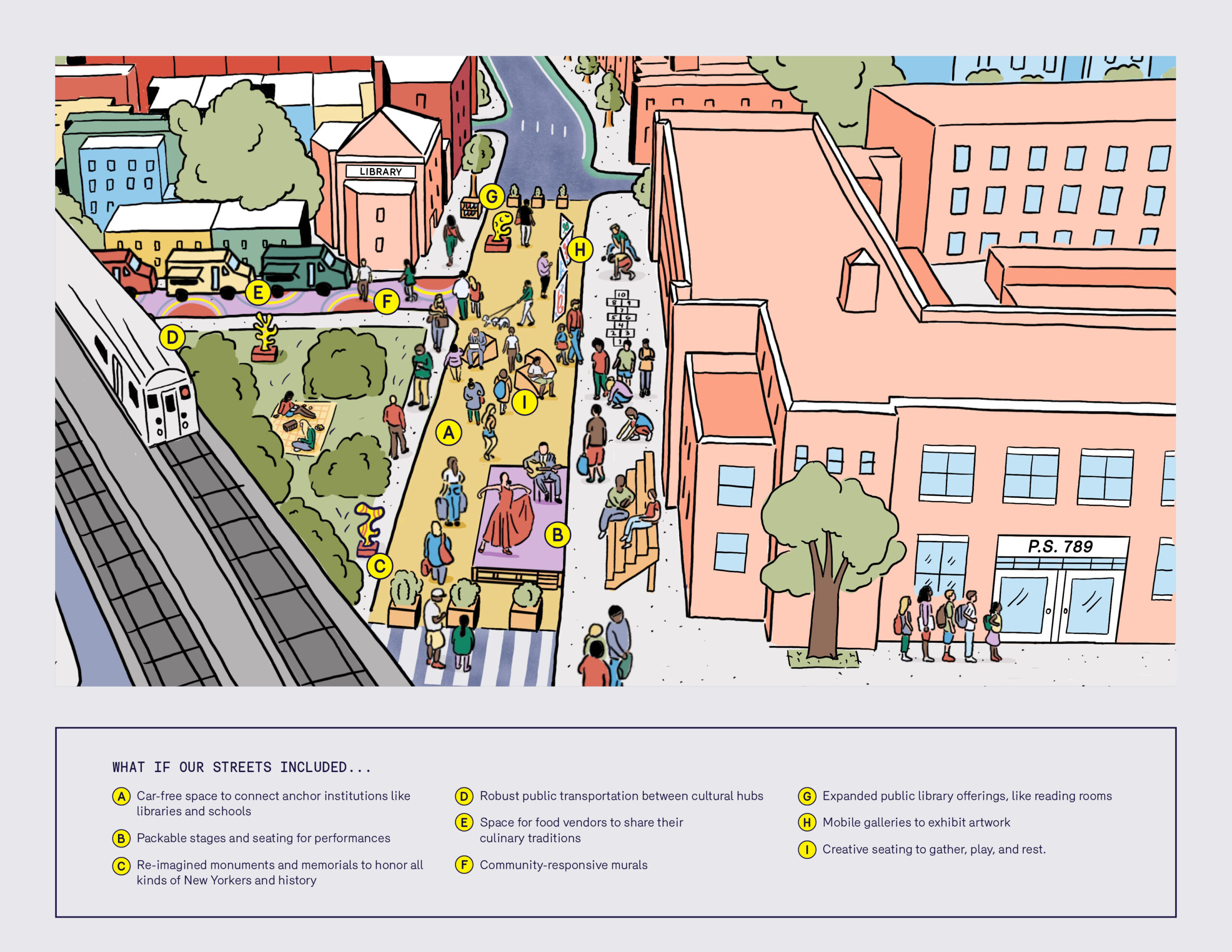
The Vision
As New Yorkers took to the streets to clap, sing, dance, and protest in the summer of 2020, we saw more than ever that culture connects us, builds safety, and fosters empathy.
We also witnessed how streets can serve as new cultural spaces, demonstrated by the creative reclamation of street space for Black Lives Matter murals from Morris Ave in the Bronx to Richmond Terrace in Staten Island, theater and dance in the Lower East Side, and outdoor live music in the Meatpacking District. Artists, cultural stewards, and culture makers supported their communities through culinary and design traditions, literary practices, and storytelling.
Culture is not only the fabric that connects communities, it is also a major economic force in the city. As theaters, museums, and performance venues shuttered, cultural workers were left with few venues to safely share their work. New York State saw nearly 32,000 jobs in the performing arts lost in 2020, while in New York City alone, performing arts jobs declined 72% – the sharpest job losses of any industry in the city’s economy. The City answered the call with the Open Culture program, working in tandem with Open Streets to provide new spaces for artists to present their work in the open air. There is significant opportunity to broaden the reach of the program and evolve other government programs to more robustly invest in streets for culture.
We envision Culture Streets as sites to support thriving, creative communities with temporary activations and permanent interventions on our streets. Culture Streets should place equity at the core by prioritizing neighborhoods with limited outdoor space and organized resources, and uplifting voices, traditions, and stories of Black, Latino, Asian and immigrant New Yorkers. We imagine a city whose streets can be easily activated and used by local communities, and are spaces that respect and amplify existing traditions while serving as instruments for cultural stewardship and preservation.
Recommendations
1. Create a network of Culture Streets around anchor institutions.
Community anchors like libraries, schools, and cultural institutions are essential neighborhood resources, yet they can often be spatially disconnected from each other and other neighborhood public amenities. By 2030, the City could designate and build 20 Culture Streets adjacent to community anchor institutions that are permanently closed to car traffic. These streets could create a robust network of public space for performance, gathering, learning, and celebration, connected by a transportation network with multiple modes of mobility for bicycles, scooters, pedestrians, and public transit.
ACT NOW: Site Culture Streets with School Streets and libraries.
By 2023, the City could build on DOT’s School Safety projects by designating an Open Street adjacent to every public school, prioritizing schools that have little access to open space in a neighborhood first. DOT could also partner with the New York City public library system to expand Outdoor Reading Rooms adjacent to public libraries in the warmer months.
ACT NOW: Launch a NYC Culture Streets Passport.
Drawing inspiration from initiatives like Culture Pass, the NYC Department of Cultural Affairs (DCLA) could launch a program to encourage exploration of culture streets programming across the city.
2. Expand technical assistance for Culture Streets
Many small arts organizations lack the infrastructure to host audiences on the street. The City could expand the current technical assistance program for Open Streets partners to include Culture Streets, working to connect smaller arts organizations and individual artists with Culture Streets near anchor institutions. Anchors could help provide key amenities such as access to bathrooms and drinking water to support cultural activation in the street, as well as cover liability and permitting costs.
ACT NOW: Create a returning festival fast-track permitting process.
The City could create a ‘fast-track’ permitting process for communities or organizations that have successfully hosted the same street festival in the last five years to encourage robust yearly programming.
3. Build a thriving ecosystem of local artists to activate the Right of Way.
DCLA could launch a new set of grants for local artists and community members to activate Right of Way spaces around libraries, schools, and cultural institutions. This work could complement private funds like Creatives Rebuild New York.
ACT NOW: Relaunch New York City Artists Corps 2.0.
In 2023, the City could relaunch an expanded version of New York City Artist Corps, prioritizing funding artists in neighborhoods hardest hit by COVID-19 to program Open Streets. To reduce barriers, the City could build on the current roster of approved local artists that can activate the Right of Way in their communities.
ACT NOW: Partner aspiring cultural workers with community organizations.
The City could resource low-to-moderate income (LMI) neighborhoods with aspiring cultural workers through university programs like CUNY Cultural Corps or the Summer Youth Employment Program, who will help program and curate public space community-based activations.
4. Pilot new types of temporary arts spaces in the roadway.
Artists performing in the Right of Way often lack the physical infrastructure to support their crafts. DOT and DCLA could launch a Request For Proposals in every borough to develop innovative and flexible designs for temporary arts spaces, such as a packable stage and seating, a mobile gallery, moveable barriers, lighting, sound, or other cultural needs. The final selection should prioritize partnerships with neighborhood-based artists and designers to create responsive and unique local infrastructure.
ACT NOW: Design and deploy a kit-of-parts for flexible culture streets.
In 2023, building on successful programs like StreetLab, Micro, and Photoville, work with designers to develop temporary adaptable kits for community members that can support a diverse range of cultural activities on the street.
5. Co-site street safety and permanent cultural infrastructure.
By 2030, the City can enhance safety infrastructure while creating more permanent cultural spaces in the Right of Way. To do that, the City could boost investments across cultural programs through DOT and DCLA’s Percent for Art program and City Council’s Participatory Budgeting to create community-driven plans for permanent cultural infrastructure.
6. Enhance government arts programs to meet new streets needs.
The City can allocate robust funding opportunities to support different kinds of cultural practices in the street where appropriate for each community. Enhance and expand existing programs such as Open Culture, the DOT Plaza Program, Public Artists in Residence, Asphalt Art, Arterventions, and Temporary Art to serve more New Yorkers, while marshaling funding to less-resourced community partners.
ACT NOW: Reduce barriers to Open Culture.
In 2023, the City could broaden accessibility of the Open Culture program expanding eligibility to individuals and organizations without 501(c)(3) status. Use the MTA Music Underground Program as a model for connecting artists & performers with cultural sites on NYC streets.
7. Embed artist voices in all levels of neighborhood street design and planning.
By 2030, Borough Presidents could ensure every Community Board assigns an artist on every transportation committee or creates a committee dedicated to arts and culture.
ACT NOW: Assign a cultural planner to street projects around anchor institutions.
For all street improvement initiatives around cultural organizations, schools, or libraries, assign a cultural planner, community organizer, or artist with deep roots in program neighborhood to help liaise street project planning and design with community members and the project team in both the planning, design, and implementation.
ACT NOW: Launch Phase III to Building Community Capacity.
In 2023, launch a third phase of the Building Community Capacity Program for developed artist coalitions in program neighborhoods to actualize and implement capital projects in the streetscape.
ACT NOW: Strengthen community engagement with the cultural community.
In 2023, the Interagency Public Realm Working Group should hold listening sessions with artist coalition organizations like HueArts and DanceNYC to better understand barriers to community and artist participation in streetscape and neighborhood planning, and identify strategies for improvement.
